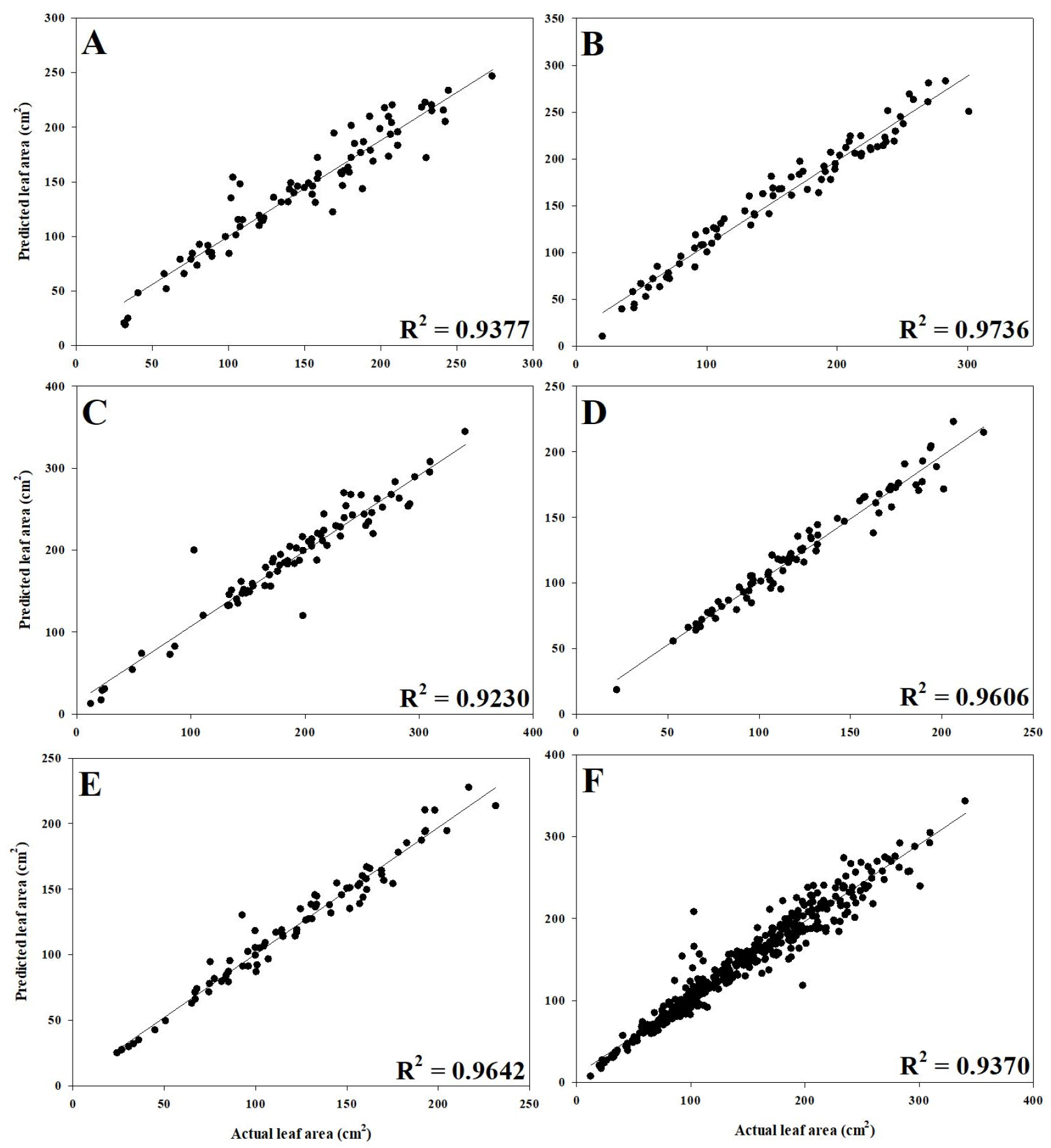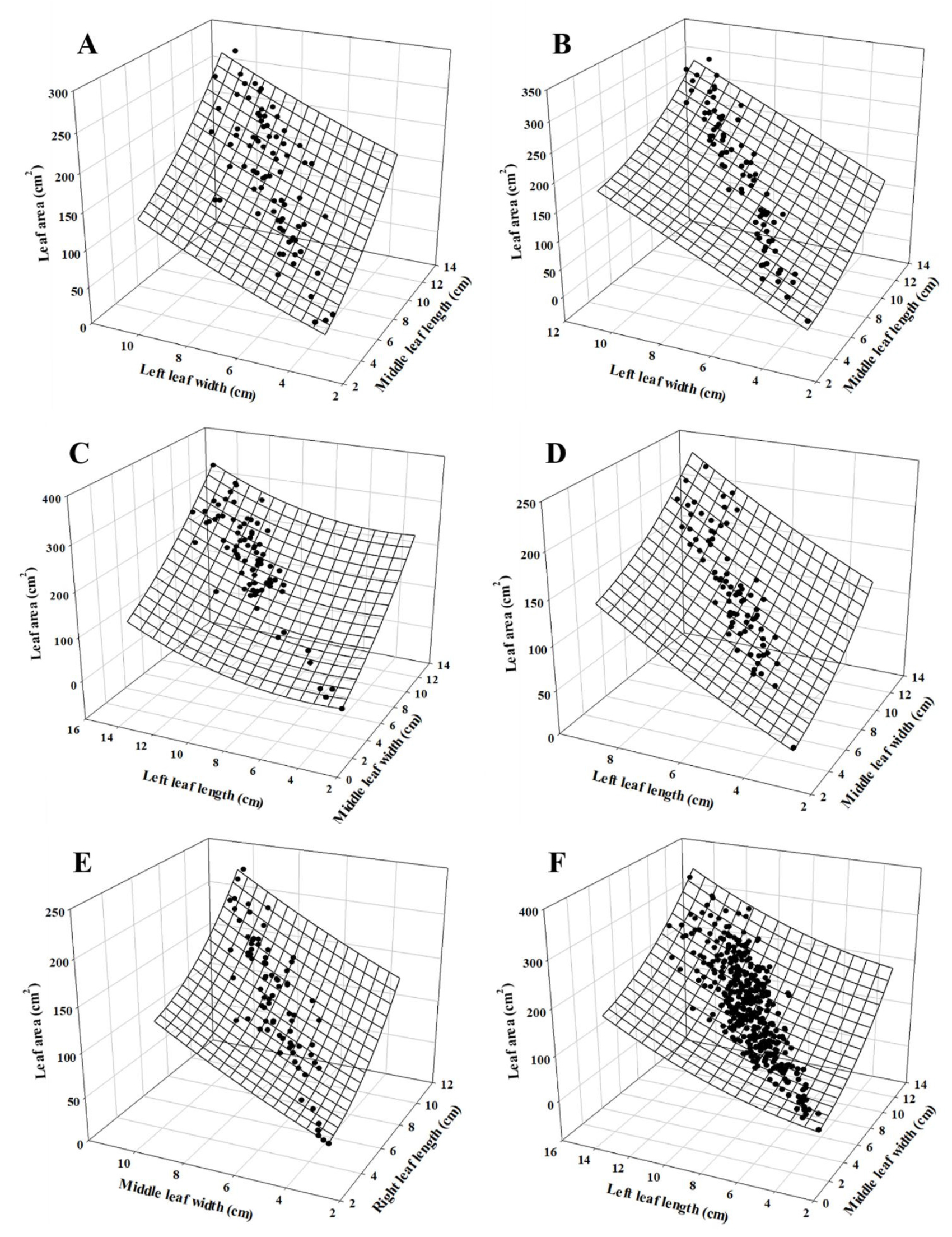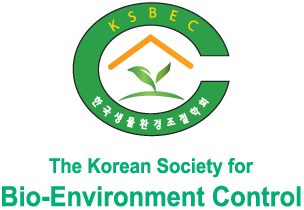Introduction
The most commonly cultivated strawberry Fragaria × ananassa is an octoploid with 56 chromosomes (Hancock, 2020). Strawberries are cultivated worldwide in an area of 384,668 ha, with a harvest of 23,036 kg/ha (FAOSTAT, 2022). The cultivation area in Korea is 5,683 ha, with 163,646 tons of strawberries production (KOSIS, 2021). The ‘Seolhyang’ cultivar is ranked first in the domestic strawberry market (84.5%), followed by the ‘Geumsil’, ‘Jukhyang’, and ‘Maehyang’ cultivars. In 2020, Korean strawberry exports amounted to 4,823 tons, with the primary cultivars being ‘Geumsil’, ‘Maehyang’, and ‘Arihyang’ (RDA, 2022).
Strawberry plants are perennial herbs with leaves, roots, stems, and a crown. Leaves, roots, runners, and flower buds grow from the crown. The leaves of strawberry plants are trifoliate and appear spirally from the crown. The main functions of the leaves in plants are to absorb light for photosynthesis and assist with transpiration and respiration. The factors resulting in a reduction in the amount of light available to the plant can affect photosynthesis, the evapotranspiration rate, and water regulation. These functions are affected by the leaf area indices of the plants (Blanco and Folegatti, 2005; Syvertsen et al., 2003). Several studies have demonstrated the importance of leaf area in estimating crop growth, development rate, harvest potential, light utilization efficiency, and water and nutrient uptake (Bhatt and Chanda, 2003; Keramatlou et al., 2015; Olivera and Santos, 1995; Williams, 1987). Furthermore, studies have shown that there is a close relationship between the leaf area and fruit quality or maturity of fruit crops (Torri et al., 2009; Usenik et al., 2008). Thus, measurement of the leaf area is essential for the evaluation of plant growth, fruit yield, and fruit quality.
Leaf area is usually measured using different approaches, including photography, image analysis, and electronic leaf area meters. However, these methods are destructive, as they require leaf excision. Destructive methods are also costly and time-consuming. Recently, non-destructive measuring devices, such as hand scanners, have been developed. However, these are expensive and challenging to use on certain crop types (Yun et al., 2016). The advantage of using non-destructive leaf area measurement is that it can be performed continuously and repeatedly for the same plant, reducing the variability and damage caused by leaf excision (NeSmith, 1991). Therefore, a simple, fast, reliable, cost-effective, and non-destructive method for measuring the leaf area is necessary. A simple linear equation to predict the leaf area of a horticultural plant non-destructively can be performed without expensive leaf area measuring equipment (Olfati et al., 2010; Salerno et al., 2005). The high accuracy and precision of non-destructive methods based on linear measurements have been demonstrated for several crops (Astegiano et al., 2001; Guo and Sun, 2001; Silva et al., 2015; Salerno et al. al., 2005; Tsialtas and Maslaris, 2005). However, there are few studies using non-linear equations for estimating leaf area, and studies on estimating leaf area of strawberries have not been conducted since 2005 (Demirsoy et al., 2005). As well, current research on the estimation of leaf area in domestic strawberry cultivars is limited.
In this study, nonlinear regression analysis was performed to develop a method to estimate the trifoliate leaf area based on the lengths and widths of three leaflets in the following five domestic strawberry cultivars: ‘Arihyang’, ‘Jukhyang’, ‘Keumsil’, ‘Maehyang’, and ‘Seollhyang’. The Python code used to develop the model will be made available to other researchers in the field.
Materials and Methods
In this study, five domestic strawberry cultivars (‘Arihyang’, ‘Jukhyang’, ‘Keumsil’, ‘Maehyang’, and ‘Seollhyang’) were used to develop an equation to estimate the leaf area. Two of the strawberry cultivar seedlings, ‘Maehyang’ and ‘Seolhyang’, were purchased from the Hamyang-gun seedling company in Gyeongsangnam-do (35°39'N, 127°40'E, elevation 448 m). ‘Keumsil’ strawberry seedlings were purchased from the Jinju strawberry farm in Gyeongsangnam-do (35°13'N 127°57'E, elevation 41 m). ‘Arihyang’ strawberry seedlings were obtained from the National Institute of Horticulture and Herbal Science (35°49'N 127°01'E, elevation 30 m), and ‘Jukhyang’ strawberry transplants were obtained from Damyang-gun’s agricultural extension (35°18'N 126°58'E, elevation 44 m). In a tunnel-type greenhouse (25 × 7 m2), located at an experimental farm of the Kyungpook National University (35°52'N 128°35'E, elevation 30 m), strawberry transplants of the five cultivars were planted in two rows at 20 cm intervals on September 10, 2021.
Sampling of the leaves involved randomly collecting five leaves of each cultivar at intervals of 3 to 7 days from November 1, 2021 to January 24, 2022. The length, width, and area of each three-compound leaf were measured using the collected leaves. Leaf width (cm) was measured at the widest part of the leaf, and leaf length (cm) was measured from the tip of the leaf to the point of petiole intersection (Fig. 1). The actual area of the leaf was measured using an LI-3100 meter (Licor Biosciences, Lincoln, NE, USA). The leaf area was estimated, using 80 leaves for each cultivar, through nonlinear regression analysis (3D, Paraboloid) of Sigma plot 14.5 (SigmaPlot 14.5, SPSS Inc., USA). The independent variables, including the length and width of the middle leaf (ML and MW, respectively), ML and width of the left leaf (LW), ML and width of the right leaf (RW), MW and length of the left leaf (LL), and MW and length of the right leaf (RL), were combined. The model developed in this study was coded using Python in a Jupyter notebook-based environment.
Results and Discussion
In this study, several nonlinear equations were evaluated to estimate the leaf areas of five strawberry cultivars. Leaf area was estimated using the lengths and widths of individual leaves from each variety as independent variables (Fig. 2). In the case of ‘Seolhyang’, the independent variables MW and RL showed the highest coefficient of determination (R2 = 0.964). ‘Maehyang’ and ‘Keumsil’, which have upright leaves, showed the highest R2 values (0.960 and 0.923, respectively) with MW and LL as independent variables. ‘Arihyang’ and ‘Jukhyang’, which have semi-open leaves, had the highest R2 values (0.9377, 0.9736 respectively) when ML and LW were used as independent variables (Table 1). Leaf shape affects the determination of the independent variables used for estimating leaf area. Analysis of the leaf shape ratio for each strawberry cultivar confirmed that the leaf shape ratios of ‘Keumsil’ and ‘Maehyang’ were 1.3 and 1.4, respectively. These ratios were higher than those of the other cultivars (data not shown). When all leaves of each cultivar were used, the R2 value (0.9370) was highest when MW and LL were used as variables. As shown in this study, estimated of leaf area for each cultivar showed a higher R2 value than that for estimated of combined each cultivar, and the R2 value was also very different for each cultivar. ‘Jukhyang’ showed the highest R2 value among all cultivars, with ‘Seolhyang’ and ‘Maehyang’ exhibiting the next highest R2 values. ‘Arihyang’ and ‘Geumsil’ had the lowest R2 values. A lower R2 value was possibly caused by poor seedling conditions initially observed in the ‘Arihyang’ cultivar, compared to those in the other cultivars, and due to excessive growth in the ‘Geumsil’ cultivar.
Table 1.
Relationship between the actual strawberry leaf area of each cultivar and the independent variable used in the non-destructive estimation method.
| Cultivar | Regression equation | x | y | y0 | a | b | c | d | Standard error | R2 |
| Arihyang | LA = | CL | LW | -46.8247 | 2.9588 | 8.6907 | 0.8706 | 0.3442 | 14.79 | 0.9377 |
| Jukhyang | CL | LW | -56.7406 | -3.1558 | 20.7433 | 0.9916 | -0.033 | 11.89 | 0.9736 | |
| Keumsil | CW | LL | -3.7433 | 11.9907 | -7.9649 | 0.8282 | 0.9531 | 20.02 | 0.9230 | |
| Maehyang | CW | LL | -33.7759 | 13.141 | -0.1245 | 0.4744 | 0.6415 | 8.70 | 0.9606 | |
| Seollhyang | RL | CW | -3.7635 | -7.7361 | 9.3429 | 1.5336 | 0.3409 | 9.19 | 0.9642 | |
| Total leaves | CW | LL | -12.8336 | 2.0435 | 2.0115 | 1.1497 | 0.6503 | 16.04 | 0.9370 |
Several studies have reported a close relationship among leaf length, width, and area in horticultural crops (NeSmith, 1991; Robbins and Pharr, 1987; Uzun and Çelik, 1999). The leaf area estimation equation of the recently developed model for strawberries was “leaf area = 1.89 + 2.145 upper leaf length left leaf width,” resulting in a very high R2 value of 0.993 (Demirsoy et al., 2005). However, the strawberry cultivars used in the above-mentioned study were ‘sweet Charlie’ and ‘camarosa’, which are grown mainly in California and Florida. Applying Demirsoy’s model to our data, an R2 value of 0.9136 was obtained, which was lower than the R2 value obtained with the model developed in this study (data not shown). In addition, it was lower than the R2 values of the individual cultivars (Fig. 3). The reliability of the developed models may differ depending on the cultivar; thus, development of additional models suitable for a cultivar or improvement of the developed model is necessary.

Fig. 3.
Relationship between the actual leaf area measurements of strawberries and the leaf area estimated using the model proposed in Table 1 (A: ‘Arihyang,’ B: ‘Jukhyang,’ C: ‘Keumsil,’ D: ‘Maehyang,’ E: ‘Seolhyang,’ F: Total leaves; n = 80).
Many growth and yield models developed recently are being coded in various languages and shared (Pradal et al., 2008). Programming languages include Python, Jullia, C, and Java. Among them, Python can use various frameworks, and has the advantage of being open source and easy to use. Therefore, in this study, the leaf area estimation model developed using the Python language was coded.
The leaf area could be predicted non-destructively using the model developed in this study for ‘Jukhyang’, ‘Seolhyang’, and ‘Maehyang’ cultivars, with R2 values of 0.96 or higher. By measuring the leaf area using a non-destructive method, the functions of leaves, such as respiration, transpiration, and photosynthesis, can be evaluated. However, the ‘Arihyang’ and ‘Keumsil’ cultivars had low R2 values; hence, additional experiments or corrections are recommended. The leaf area estimation model for each cultivar developed in this study was also coded using Python and shared on github (VanRossum and Drake, 2010; GitHub address: skkim76/KNU-PHL-project (github.com)); it is available for use by other researchers.






